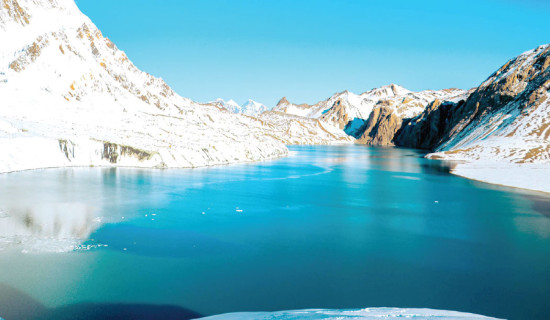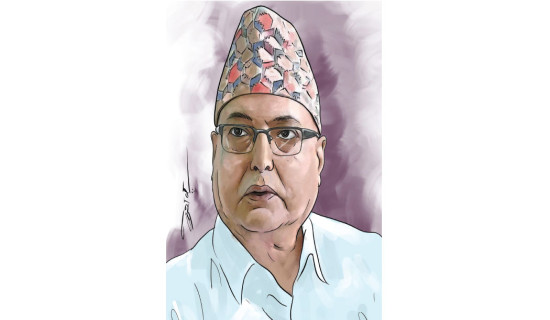- Friday, 16 May 2025
Mitigate Disaster Impacts
Monsoon is around the corner. The season comes as a boon for an agricultural country like Nepal, bringing in much-needed rains that feed the crops. The rains are vital to replenish depleted groundwater. The rains-fed swollen rivers raise the electricity production, a crucial export for the last few years. But monsoon is also synonymous with disasters. Floods, landslides, inundation and other monsoon-induced disasters claim hundreds of lives every year. Owing to its topography, which is overwhelmingly comprised of hills and mountains to the north and a little bit of plain land to the south, Nepal is especially vulnerable during this time – a grim fact that mandates a matching response in the form of preparedness before its onset as a way to minimise casualties in the event of disaster.
This proactive measure that involves planning can significantly defang the impacts of disaster, preventing injuries and fatalities, and also protecting infrastructure and property. Keeping infrastructure safe from harm ensures the continuity of essential services like roads, electricity, internet, health and others. A well-organised and meticulously planned response reduces panic and confusion, as people get to know what to do during the disaster. This is also crucial to minimise disruption to businesses, schools, as well to make them recover quickly in case they take a hit. Such a collective response also fosters a sense of resilience and unity.
Disaster preparedness includes clearing drainage systems, gutters, and floodwater channels to prevent flooding. It also incorporates identifying landslide and flood-prone areas, vulnerable people and infrastructure and building shelter homes to house the vulnerable and the victim, safe routes and evacuation plans that are community-specific. The early warning system is another critical step. Setting up weather monitoring systems and disseminating timely alerts has proved to be effective in saving lives.
To bolster disaster preparedness, the province-level Disaster Management Team of the Armed Police Force (AFP) in Banke district on Wednesday conducted a large-scale simulated emergency response drill in the Rapti River. The exercise focused on search and rescue operations for drowning incidents and covered key aspects of pre-disaster planning and emergency response. Such drills are indispensable to ensure the effective and timely evacuation of affected locals to safety, and need to be done in every at-risk area nationwide.
However, that was not the case in the Kathmandu Valley. According to a news report carried by this daily on Wednesday, disaster preparedness appears sluggish and inadequate in the Valley. The situation is so dire that the capital city currently has only one rescue boat readily available for emergency response; experts have pointed out the necessity of 600 such boats. How vulnerable Kathmandu is to monsoon-triggered disasters was highlighted by last year's days of incessant rain that not only wreaked widespread havoc across the valley and its surrounding districts but also claimed hundreds of lives. Thousands more had to be evacuated to safety.
To discuss these grave issues and take proactive steps not to repeat this monumental loss and damage, a stakeholder engagement programme was held in Kathmandu on Tuesday. But to the surprise of many, no representative from the most affected municipalities showed up. Even those municipalities historically considered "low risk" have recently seen a rise in incidents of flooding and landslides, necessitating a response plan. As underscored by the experts who addressed the programme, effective intergovernmental coordination is imperative to minimise the impacts of disasters. This calls for the three levels of government to work in tandem to implement the disaster preparedness plans.







-square-thumb.jpg)
-square-thumb.jpg)







